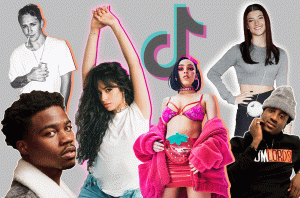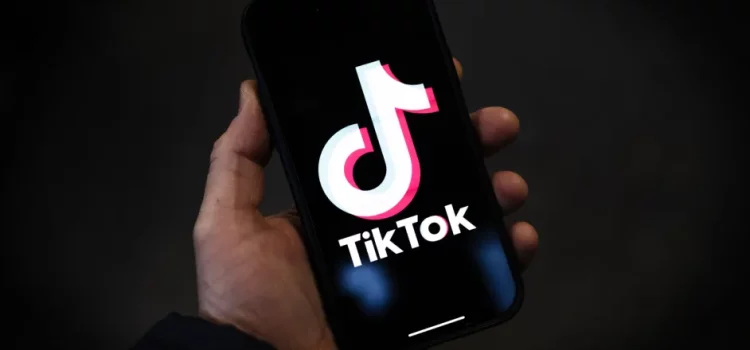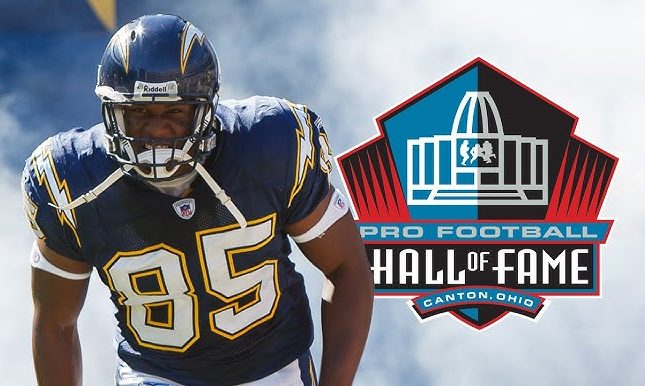
Introduction
In recent years, TikTok has emerged as a significant player in the music industry, dramatically altering how songs gain popularity and climb music chart rankings. This social media platform, known for its short-form video content, has become a powerful tool for artists and record labels to promote new releases and revive older tracks. This article delves into the multifaceted impact of TikTok on music chart rankings, examining the dynamics of viral trends, the role of user-generated content, and the broader implications for the music industry.
The Rise of TikTok

TikTok, launched by the Chinese company ByteDance in 2016, has quickly become a global phenomenon. With its user base surpassing one billion active users, the platform’s influence on popular culture is undeniable. TikTok’s unique algorithm, which curates content based on user preferences and engagement, has created an environment where songs can go viral almost overnight.
TikTok’s Role in Music Discovery
TikTok’s algorithm is designed to introduce users to trending content, which often includes catchy, short snippets of songs. This format has democratized music discovery, as users from around the world can instantly engage with and amplify songs through viral challenges, dances, or memes. Songs that may not have gained traction through traditional platforms like radio or streaming services can achieve massive popularity on TikTok, often reaching millions of users within a short period.
Viral Challenges: A New Avenue for Artists
One of the most effective ways TikTok influences music chart rankings is through viral challenges. Artists and their teams now focus on creating catchy, 15- to 30-second hooks that can easily be adopted for dance routines or other content. These viral challenges encourage users to engage with a specific song, further fueling its popularity. When a challenge gains momentum, the corresponding song sees a significant rise in streams on platforms like Spotify and Apple Music, boosting its position on music charts.
Viral Trends and Music Discovery

One of the most significant ways TikTok impacts music chart rankings is through viral trends. Users create and share videos set to specific songs, often incorporating dance routines, challenges, or other creative elements. When a song becomes the soundtrack for a viral trend, it can lead to millions of users engaging with and sharing the track, driving streams and downloads across other platforms.
For example, Lil Nas X’s “Old Town Road” gained massive popularity on TikTok before topping the Billboard Hot 100 for a record-breaking 19 weeks. Similarly, Doja Cat’s “Say So” experienced a resurgence in popularity due to a viral dance challenge on TikTok, propelling it to the top of the charts.
TikTok and the Billboard Hot 100
The Billboard Hot 100 has traditionally been one of the most recognized metrics for music success in the U.S. However, the rise of TikTok has significantly altered the factors contributing to chart success. Billboard now considers streaming data in its rankings, and songs that trend on TikTok often see an immediate surge in streams, which in turn drives their chart performance. Songs like “Old Town Road” by Lil Nas X and “Savage Love” by Jawsh 685 and Jason Derulo achieved major chart success largely due to TikTok virality.
The TikTok Effect on Legacy Artists
TikTok has not only propelled new artists to stardom but also revived interest in older songs and legacy artists. Many classic songs have experienced a resurgence on music charts due to viral TikTok trends. For example, Fleetwood Mac’s “Dreams” re-entered the charts decades after its release, thanks to a viral video. This phenomenon showcases TikTok’s ability to breathe new life into music catalogs and push songs back into mainstream recognition.
User-Generated Content and Engagement

TikTok’s emphasis on user-generated content allows for a diverse range of musical genres and artists to gain exposure. Unlike traditional media, where a few gatekeepers control what music gets played, TikTok democratizes music discovery. Users from all over the world can share their favorite tracks, leading to a more organic and widespread dissemination of music.
This user-driven model has led to the success of many independent and emerging artists who might not have had the resources to promote their music through traditional channels. For instance, artists like BENEE and Powful saw their careers take off after their songs were featured in popular TikTok videos.
The Role of Influencers and Creators
Influencers and creators on TikTok play a crucial role in shaping music trends. Many artists collaborate with popular TikTok creators to launch their songs, leveraging the creators’ established audiences. When a well-known influencer promotes a track, it often results in a surge of engagement, driving the song’s performance on charts. This collaboration highlights the symbiotic relationship between artists and TikTok influencers.
Streaming Services and Chart Integration
Streaming services have adapted to the TikTok phenomenon by incorporating data from the platform into their algorithms. As a result, songs that gain popularity on TikTok often experience a spike in streams on platforms like Spotify and Apple Music. This integration illustrates how TikTok serves as a springboard for music success, making it an essential factor in chart performance.
The Algorithm’s Role

TikTok’s algorithm plays a crucial role in determining which songs gain traction on the platform. By analyzing user interactions, such as likes, shares, and comments, the algorithm identifies trending content and promotes it to a broader audience. This can create a feedback loop, where popular songs become even more popular as they are exposed to more users.
The algorithm’s ability to surface content tailored to individual preferences means that niche genres and lesser-known artists can find their audience. This has led to a more diverse musical landscape, with chart rankings reflecting a wider array of musical tastes.
Impact on Music Chart Rankings
The influence of TikTok on music chart rankings is evident in the correlation between viral TikTok songs and their performance on streaming platforms and charts. Many chart-topping hits in recent years have had their origins in TikTok trends, demonstrating the platform’s power in shaping music consumption.
Streaming services like Spotify and Apple Music have also taken note of TikTok’s impact, often featuring viral TikTok songs in their curated playlists. This further amplifies the reach of these tracks and solidifies their presence on music charts.
Global Impact and Cross-Cultural Influence
TikTok’s global user base allows songs to transcend cultural and geographical barriers. Artists from non-English-speaking countries have found chart success due to TikTok virality, creating an increasingly globalized music landscape. K-pop, Latin music, and African genres like Afrobeats have gained traction on U.S. charts as TikTok’s algorithm surfaces songs based on user preferences rather than language or location.
Cross-Promotional Opportunities
TikTok has opened up new avenues for cross-promotional opportunities between artists and brands. Many musicians collaborate with brands for promotional challenges that feature their songs, further enhancing visibility. For example, a fashion brand might use a popular track in its ad campaign, prompting TikTok users to create content that showcases both the music and the brand.
Challenges and Criticisms

While TikTok’s impact on music chart rankings has been largely positive, it is not without its challenges and criticisms. Some industry professionals argue that the platform’s emphasis on short, catchy hooks can lead to a homogenization of music, with artists prioritizing viral potential over artistic integrity.
Additionally, the rapid turnover of viral trends means that songs can quickly rise and fall in popularity, leading to a more volatile and unpredictable music landscape.
The Democratization of Music Success
TikTok has democratized the path to music success, allowing independent artists to break through the noise without the backing of major labels. Many viral hits come from unknown artists who find their songs trending on the platform. This shift has changed the music industry dynamic, where talent and creativity can now lead to success regardless of an artist’s background or resources.
Future of TikTok’s Influence on Music
As TikTok continues to grow, its impact on the music industry will only deepen. Record labels, artists, and chart compilers are already adapting their strategies to harness the platform’s power. TikTok’s short video format, combined with its highly effective algorithm, will continue to drive music discovery, elevate emerging artists, and shift how music chart rankings are determined.
The future may see even more integration between TikTok and established music ranking systems, with chart metrics evolving to prioritize user-generated content, viral trends, and global engagement, making TikTok an indispensable tool for any artist aiming to succeed in the modern music landscape.
Analysis Table
| Aspect | TikTok’s Influence | Traditional Music Promotion |
| Music Discovery | Viral trends, UGC, algorithm-driven | Radio, TV, streaming playlists |
| Audience | Primarily younger demographics, global reach | Broad demographic, depends on marketing channels |
| Promotion Costs | Low or free (organic trends) | High costs (radio, ads, streaming platform promotions) |
| Success Measurement | Virality, engagement metrics | Album sales, radio airplay, streaming numbers |
| Artist Involvement | Direct interaction with fans, challenges, and trends | Limited to official promotion channels |
Comparative Table: TikTok vs. Traditional Platforms
| Factor | TikTok | YouTube | Spotify |
| Algorithmic Influence | High, based on engagement patterns | Medium, based on views | High, based on playlists |
| Content Type | Short-form, UGC-driven | Long-form, official music videos | Streaming, curated playlists |
| Virality Potential | Extremely high trends and challenges | Medium, dependent on views | Medium, based on playlisting |
| Artist Discovery | Fast, organic | Slower, needs marketing push | Moderate, based on playlists |
Conclusion
TikTok has undeniably transformed the way music gains popularity and climbs chart rankings. By leveraging user-generated content, viral trends, and a powerful algorithm, the platform has created new opportunities for artists to reach global audiences. While there are challenges to navigate, the overall impact of TikTok on the music industry is a testament to the evolving nature of music consumption in the digital age.
As TikTok continues to grow and evolve, its influence on music chart rankings is likely to persist, shaping the future of the music industry in ways we have yet to fully understand. For now, it remains a vital tool for artists and a dynamic platform for music discovery and engagement.










